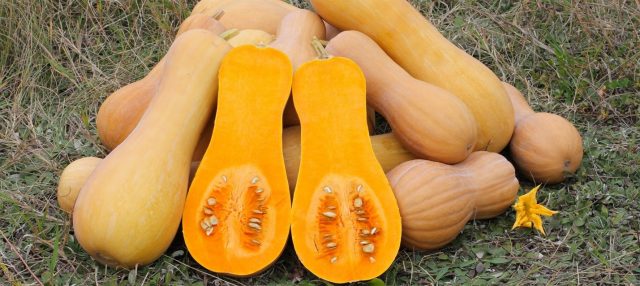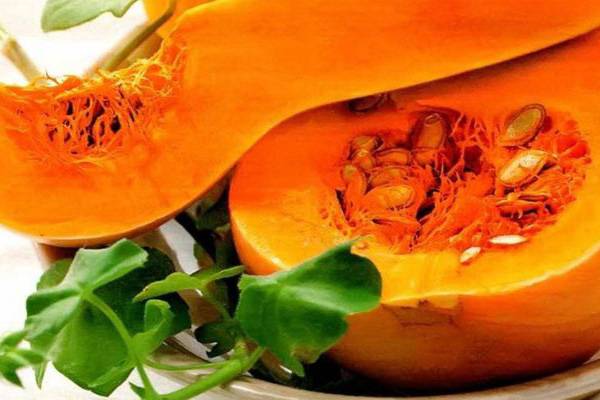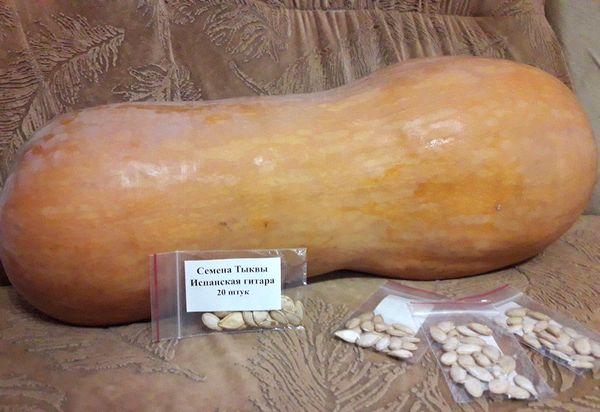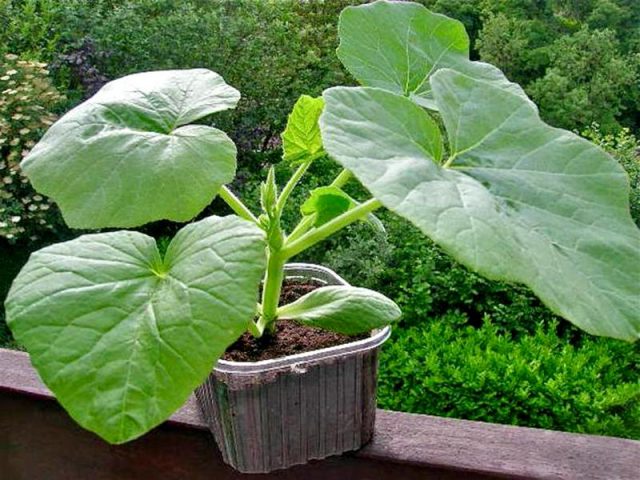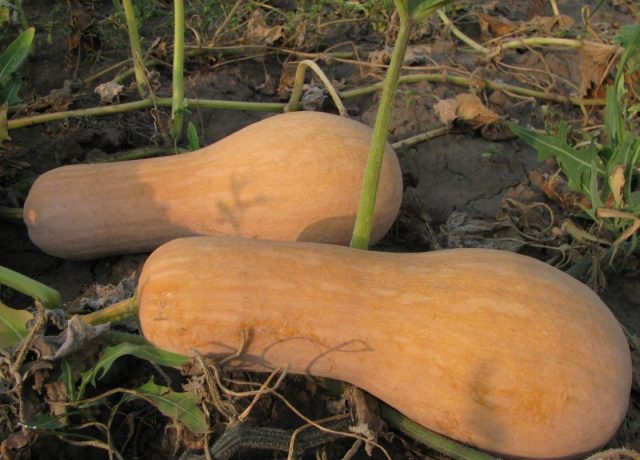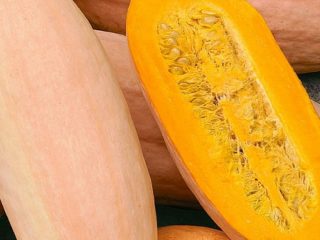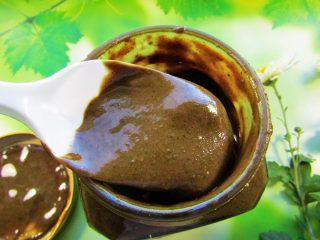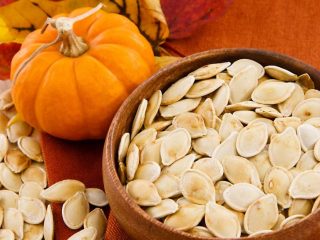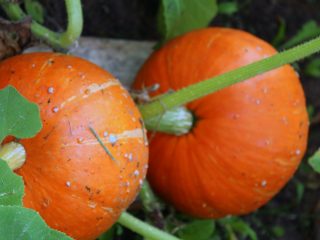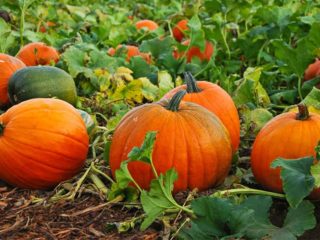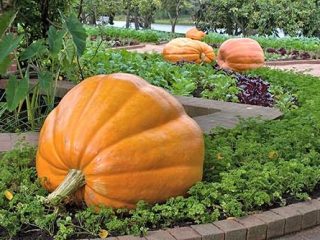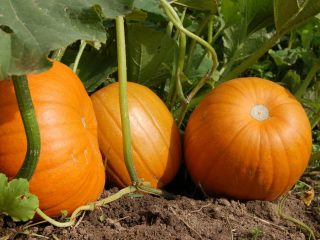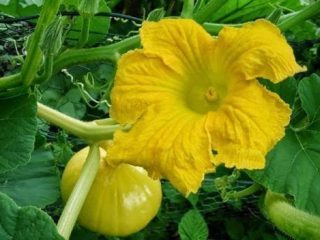Content
The Guitar pumpkin, which is sometimes given the name Honey or Spanish, was bred by specialists from the well-known agricultural company Aelita. The variety has been included in the State Register since 2013. The heat-loving plant in the middle zone is grown through seedlings. Caring for the crop is simple. Delicious fruits that stay fresh.
Description of Pumpkin Guitar
The Honey variety, or Spanish guitar, is a typical heat-loving representative of the Pumpkin family. A plant of an annual development cycle with a widespread root system capable of nourishing several large fruits: the length of the tap root reaches 2.4 m. Even in a young seedling 12-18 cm high, the root system penetrates deep to 30-40 cm. The herbaceous creeping stem of the Guitar pumpkin variety is blunt-faced , rough due to the many characteristic soft spines-hairs, grows quickly, reaching a length of 3-4.5 m. The branching vine has tendrils, with the help of which the plant clings to supports.
Guitar pumpkin leaves have long, spiny petioles of the same type as the stems - five-lobed, wide, intense green in color with whitish spots, up to 25-28 cm in diameter.Large, up to 10 cm in diameter, yellow-orange male and female flowers are created in the axils of the leaves. Female buds have short peduncles, male buds have long ones. The corollas open early in the morning, with sunrise, and close in the evening. Fruit buds bloom longer than male buds. Pumpkin plants are pollinated by insects, so in the greenhouse they practice manual pollination or leave the windows constantly open. The largest amount of pollen is produced in the first half of the day.
Description of fruits
The variety got its name “Spanish” from its external shape, vaguely reminiscent of the silhouette of a guitar. The length of the ripe Guitar pumpkin fruit is from 30 to 70 cm. The diameter is 12-15 cm in the thin elongated part, up to 19-26 cm in the thickened part, where the sections with seeds are located. Weight from 2 to 6 kg, on average 3.5-4.5 kg. The dull orange, smooth rind is quite thin and soft compared to other varieties and is easy to cut and peel. The bright pulp of the variety is orange-colored, hard, dense, with droplets of protruding juice on the cut. According to reviews, Spanish guitar pumpkin is sweet, crispy when fresh, and the density of the texture does not interfere with cutting.
The taste of the fruits of the Guitar variety is not cloying when fresh, it is sweetish, with a special light aroma, half-vegetable, half-fruit, for which the variety is called Honey. The pulp becomes sweeter and more fragrant after heat treatment. Tasters rated dishes from this variety 4.9 points. The fruits are shelf-stable and can be stored for 6 months without loss of taste in residential premises. The variety is economically profitable because the pulp makes up 85-90% of the total volume of the fruit.Small, compared to other varieties, flat, cream-colored seeds are found in the thickened apical part of the vegetable. There are many recipes for dishes made from Guitar pumpkin:
- element of fruit and vegetable salads for consumption without heat treatment;
- boiled;
- stewed;
- baked;
- component of porridge from various cereals;
- pie filling.
Characteristics of the variety
According to the description, Spanish guitar pumpkin is a light-loving plant that develops at temperatures above 20 °C. The lashes and leaves die after the slightest frost. Fruits that are exposed to even initial sub-zero temperatures can freeze, and soft spots appear on them, where various putrefactive organisms settle. The Guitar variety is drought-resistant: due to its branched root system, it extracts moisture from deep in the soil. Cloudy, cool weather can lead to stunted growth and disease. In good conditions from 1 sq. m, an average of 2.7-3.6 kg of Guitar pumpkin fruits are collected. 2-3 vegetables are left on one root for good, full filling and ripening.
Resistance to pests and diseases
The Spanish Guitar pumpkin plant can get sick in unfavorable summer weather - sudden, prolonged cold snap and frequent rains. In such weather, sharp changes between night and day temperatures cause the spread of fungal and bacterial diseases. Diseases of the table variety can be prevented by regularly thinning out overgrown vines and cutting off leaves that are too densely spaced. Sweet pumpkins are damaged by melon aphids and spider mites. Acaricides and insecticides are used against their invasion.
Advantages and disadvantages
When choosing among different varieties, gardeners often choose the Honey Guitar pumpkin because of the obvious advantages in its characteristics:
- Consistently sweet pulp;
- large fruit;
- long shelf life;
- unpretentiousness to soils;
- drought resistance;
- resistance to diseases in weather favorable to the species.
The variety has no disadvantages as such. When growing, it should be taken into account that the heat-loving crop is not genetically adapted to development in a cool climate zone.
Growing Pumpkin Guitar
In the southern regions, the seeds of the species are planted directly into the ground. In the regions of the central zone, spring can be prolonged, so it is better to grow the sweet table variety using seedlings. For pumpkin seedlings, special disposable containers are selected, at least 8x8x10 cm:
- peat pots;
- containers made from plastic bottles cut off at the top, the walls of which are cut during transshipment;
- homemade paper cups, which are planted with the plant in the ground, where the paper decomposes.
The selection of disposable containers is due to the fact that the delicate root system of the pumpkin may be damaged at the slightest destruction of the earthen clod, and the plant will die. The Honey Guitar variety is sowed in April or early May, guided by the local climate, a month before transplanting into a greenhouse or garden. The timing is calculated so that after transshipment the heat will be stable, above 18-20 °C. 2-3 seeds are placed in each container, which can be soaked before planting for 12-20 hours in warm water for better germination. Then the weaker shoots are removed.
Saplings of the Spanish Guitar pumpkin variety develop quickly. Water only with warm water at room temperature.When growing in the garden in the future, plants with 3-4 true leaves are taken out into the fresh air for hardening. 21-27 days after germination, the seedlings are transferred to spacious, well-watered holes in advance. Pumpkins are placed at a distance of 90-95x130 cm so that the stems do not intertwine and the plantings do not thicken. In greenhouses, they arrange supports and tie up lashes. Pumpkins are pollinated by insects. The ovaries are placed in special spacious hanging bags or on improvised shelves.
When growing Guitar pumpkin, watering is carried out only on the soil, without moistening the leaves, in order to avoid fungal diseases. The water is heated in the sun or in a greenhouse, watered in the evening, 1-2 times a week. In open ground, natural precipitation is usually sufficient for pumpkins. For the Guitar variety, soil moisture is provided in 2 development phases:
- before flowering;
- during the growth of ovaries.
The next day, the soil is loosened shallowly, making sure to remove all weeds, on which aphids and whiteflies can initially breed.
Sweet pumpkin is fed 16-22 days after transplantation and during the period of ovary formation. For fertilizers, shallow grooves are dug, 30 cm from the root. Feeding is done:
- from mullein;
- bird droppings;
- green herbal infusions;
- complex fertilizers for vegetables.
Wood ash is sprinkled on the soil around the root.
In warm weather throughout the summer, pumpkins practically do not get sick. They also grow in greenhouses without problems if the basic rules of agricultural technology are followed. After several ovaries appear, the top is pinched, and excess side shoots are cut off so that the fruits have time to ripen. According to the description of the Guitar pumpkin variety, reviews and photos of gardeners, the fruits will ripen in 110-120 days, by the end of August.Pumpkins are harvested earlier if the vines are dry.
Conclusion
Guitar pumpkin develops well and ripens on light soils at daytime temperatures up to 30 °C. In order for the fruits to ripen before frost, in the regions of the middle zone the seeds are planted in seedling cups. Fertile soil and timely formation will contribute to good productivity.
